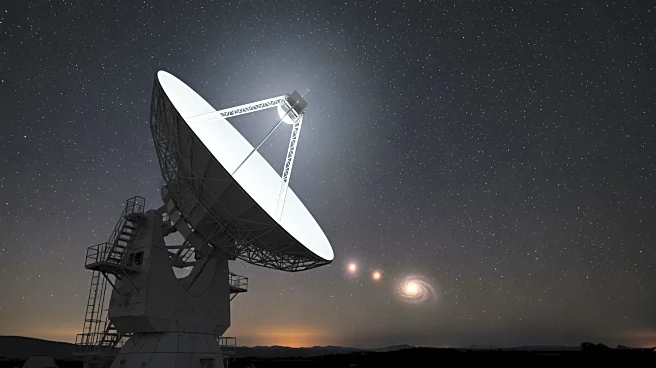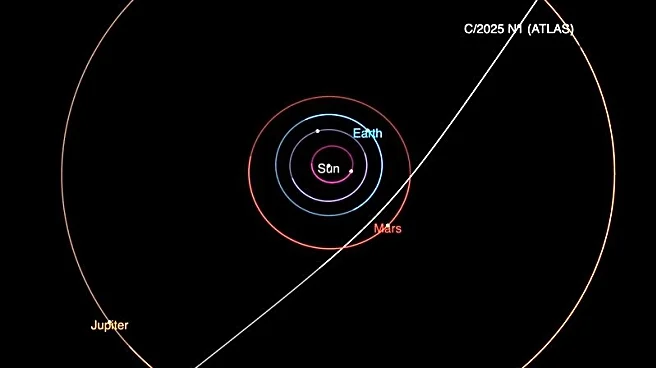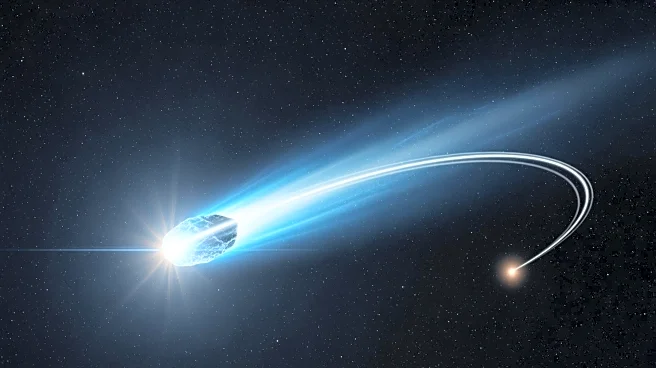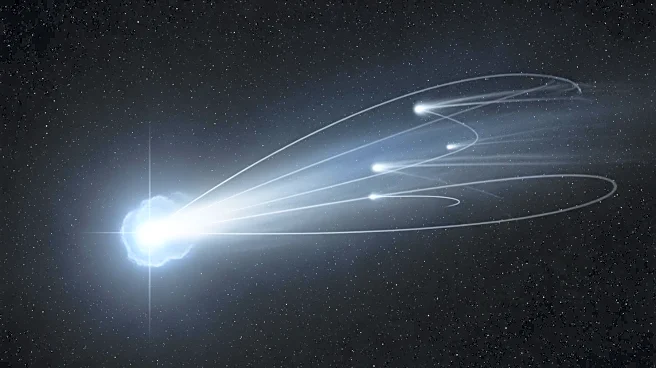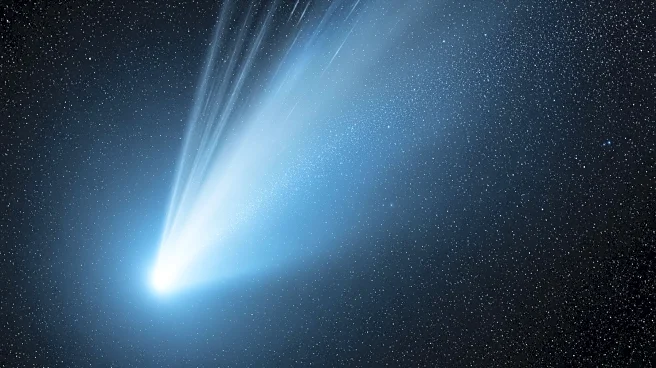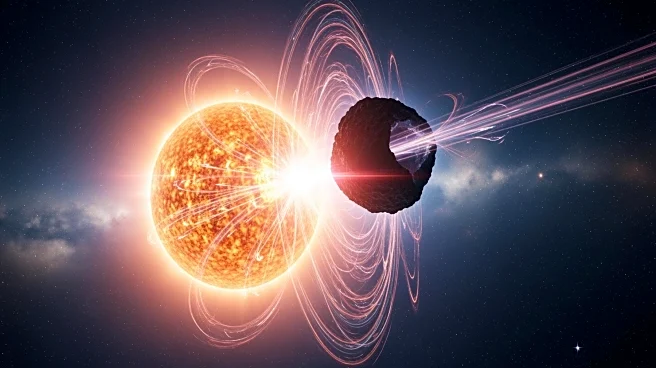What's Happening?
The MeerKAT radio telescope in South Africa conducted a search for narrowband radio transmissions from the interstellar object 3I/ATLAS on November 5, 2025. Utilizing the BLUSE backend for real-time searches,
the telescope detected 23,689 signals, all determined to be human-made radio frequency interference. Observers established a detection limit of 0.17 Watts over the frequency range of 900 to 1670 megahertz, equivalent to a mobile phone's power output at the distance to 3I/ATLAS, which was 334 million kilometers away. NASA plans to release new data from ground-based and space-based observations, including images of 3I/ATLAS when it was 29 million kilometers from Mars. The images could reveal the nucleus size and geometry of the glow around it, potentially indicating new objects accompanying 3I/ATLAS or fragments from an iceberg or mini-probes released by a technological mothership.
Why It's Important?
The search for technological radio transmissions from 3I/ATLAS is significant in the quest to understand interstellar objects and their potential origins. Establishing a detection limit helps scientists assess the likelihood of technological signatures, which could imply advanced extraterrestrial technology. The release of new images by NASA could provide insights into the object's structure and behavior, contributing to the ongoing debate about whether 3I/ATLAS is a rare comet or a technological object. Understanding these interstellar objects is crucial for assessing potential threats and preparing for future encounters. The findings could influence scientific research priorities and funding, as well as international collaboration in space exploration and defense.
